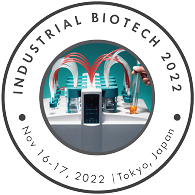Animal Biotechnology and Marine Biotechnology
The world of animal medicine has witnessed drastic technological advances in the last 20 years. Many of the new procedures and tools have been adopted from human medical practice. The advances have not only led to better treatments, but also faster and accurate diagnosis. From Ultrasounds and MRIs to the Amplatz Canine Ductal Occluder, there are many new technologies that furnish veterinarians with the ability to diagnose and ultimately save sick animals. MRI technology has been extremely instrumental in the advancement of human neuroscience. Vets are now using the imaging technology peek into the brains of pets and wild animals. On the other hand, ultrasounds have the advantage of not requiring anesthesia and comparatively cheap to perform. Laparoscopic procedures use a small camera and light source that can be incorporated into the abdominal or thoracic cavity for a peek inside the body. This is yet another example of adaptation of human medicine technology to the animal kingdom. With the development of new veterinary technology comes the necessity for those with specialized training. Veterinary technology promises a rewarding career for anyone who has a passion for animals
Marine biotechnology, sometimes referred to as “blue biotechnology”, exploits the diversity found in marine environments in terms of the form, structure, physiology and chemistry of marine organisms, many of which have no equivalenton land, in ways which enable new materials to be realised. Marine Biotechnology that involve marine bioresources, either as the source or the target of biotechnology applications. In many cases this means that the living organisms which are used to develop products or services are derived from marine sources. At the same time, if terrestrial organisms are used to develop a biosensor which is used in the marine environment to assess the ecosystem health then it also falls within the sphere of Marine Biotechnology.
- Marine Microbiology
- Origin pharmaceuticals
- Novel industrial enzymes
- Food ingredients
- New chemical compounds
- Animal Diseases
- Animal Health & Veterinary Science
- Animal Nutrition
- Tissue Engineering

